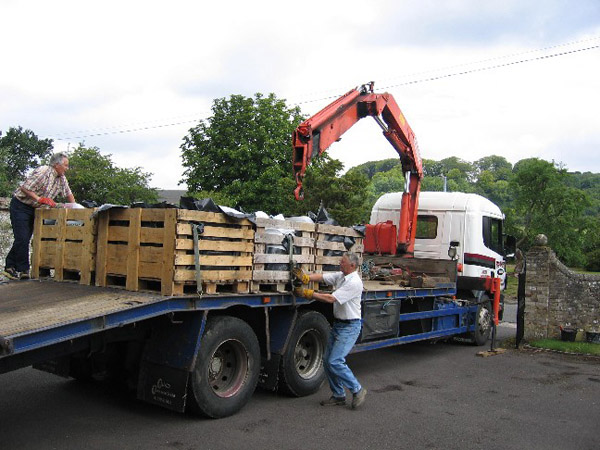Use of Lime in Rendering
Lime based mortars have many advantages over cement for external rendering, and especially when they are painted with traditional limewash. We tend to work with lime putty and make our own limewash.
These external renders were traditionally applied to disguise and protect walls. There is considerable conservation debate at present as to why renders have been removed and if they should be reapplied to protect the masonry.
The use of lime renders means that the porosity of the lime allows the wall to breathe; the lime permits general movement; the wall is protected; and the self-healing nature of the lime reduces cracking.
As stated in our Lime Mortar section, the best results require patience, care with the drying and control of suction. The result will be a traditional looking and long lasting render.
In the preparation phase existing render must be removed unless it is good lime render. Often we remove cement renders and replace them with lime renders. Sometimes it is wise to leave patches of cement renders if there is a danger of structural failure by removing them. Making good the structure prior to rendering is vital to achieve a good final rendered wall.
The use of hessian and plastic sheets is again needed. This provides a microclimate that encourages carbonation (the gradual hardening of the lime render).
Dubbing out any deep holes with a haired lime putty or repair with bricks, cob or stone is normally required.
A hand harled or thrown coat of lime is often the first coat. This was common in Wiltshire and was either the only coat or in some cases, the final coat on more expensive homes. A harled first coat will helps stabilise the wall and provide a good key for any following coats. Traditionally some rubble walls had just a single render coating and a flat surface was not achieved.
Subsequent coats and a floated final coat would follow. There are several finishes to this final coat that are applied while the lime is still green. These help maintain the tradition look of the wall.
A Limewash may then follow and can be provided in several traditional colours.
We tend to use a 3.5/1 mix of coarse sharp well-graded sand to lime putty, with the addition of a pozzolan. Again Natural Hydraulic Lime is sometimes used or specified.
Spot repair of renders may be appropriate. Here only weakened or hollow sounding render is repaired.
